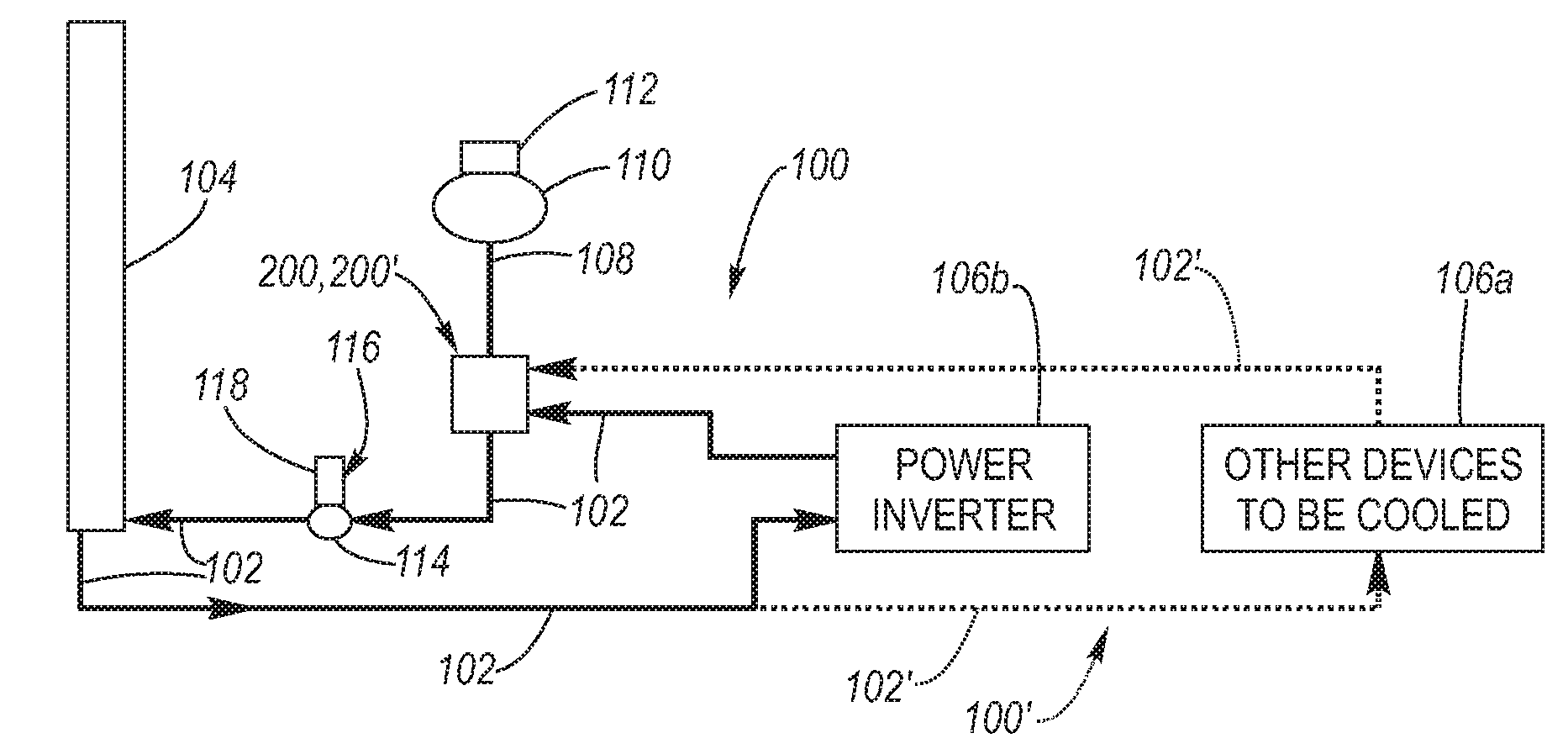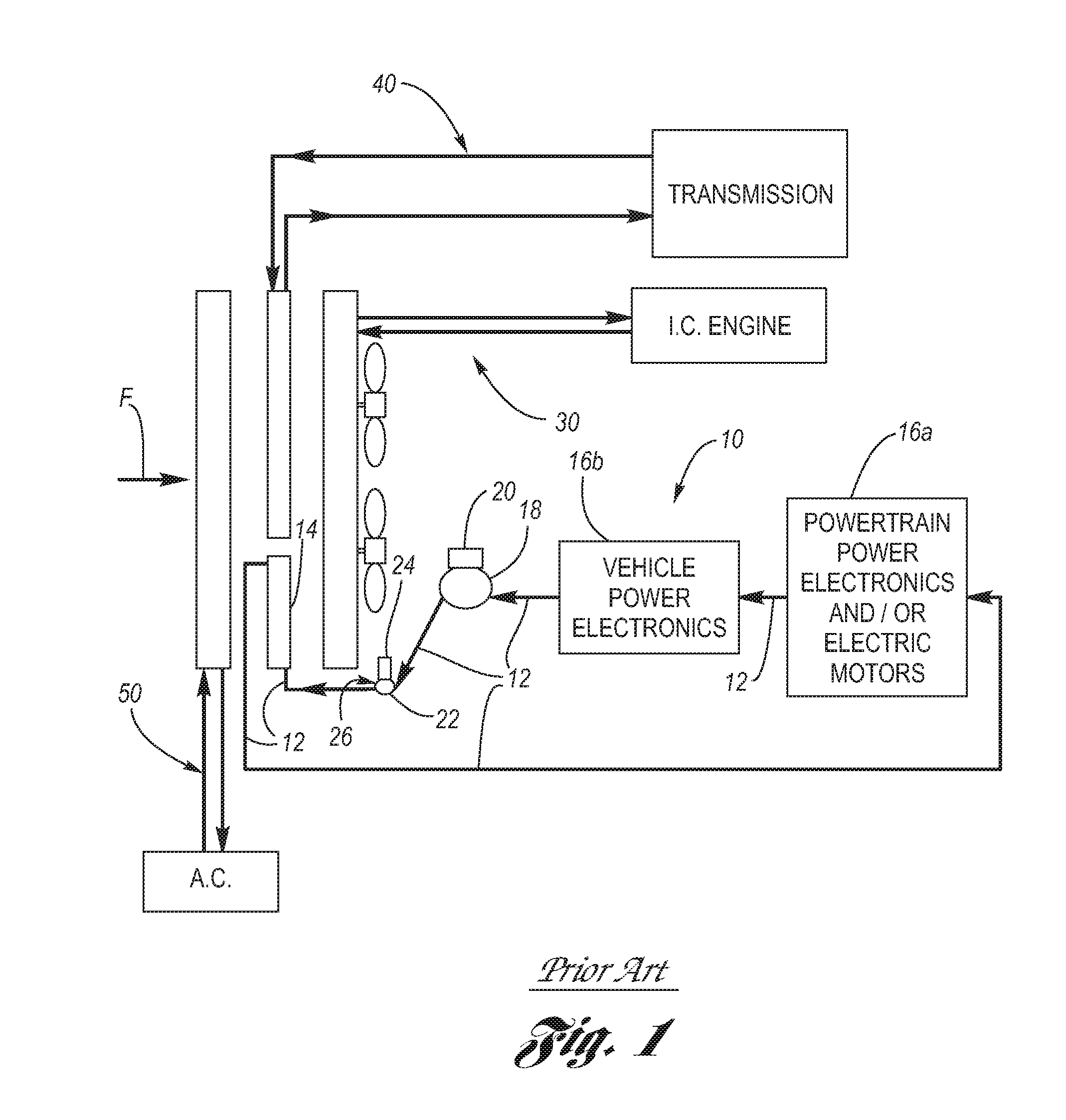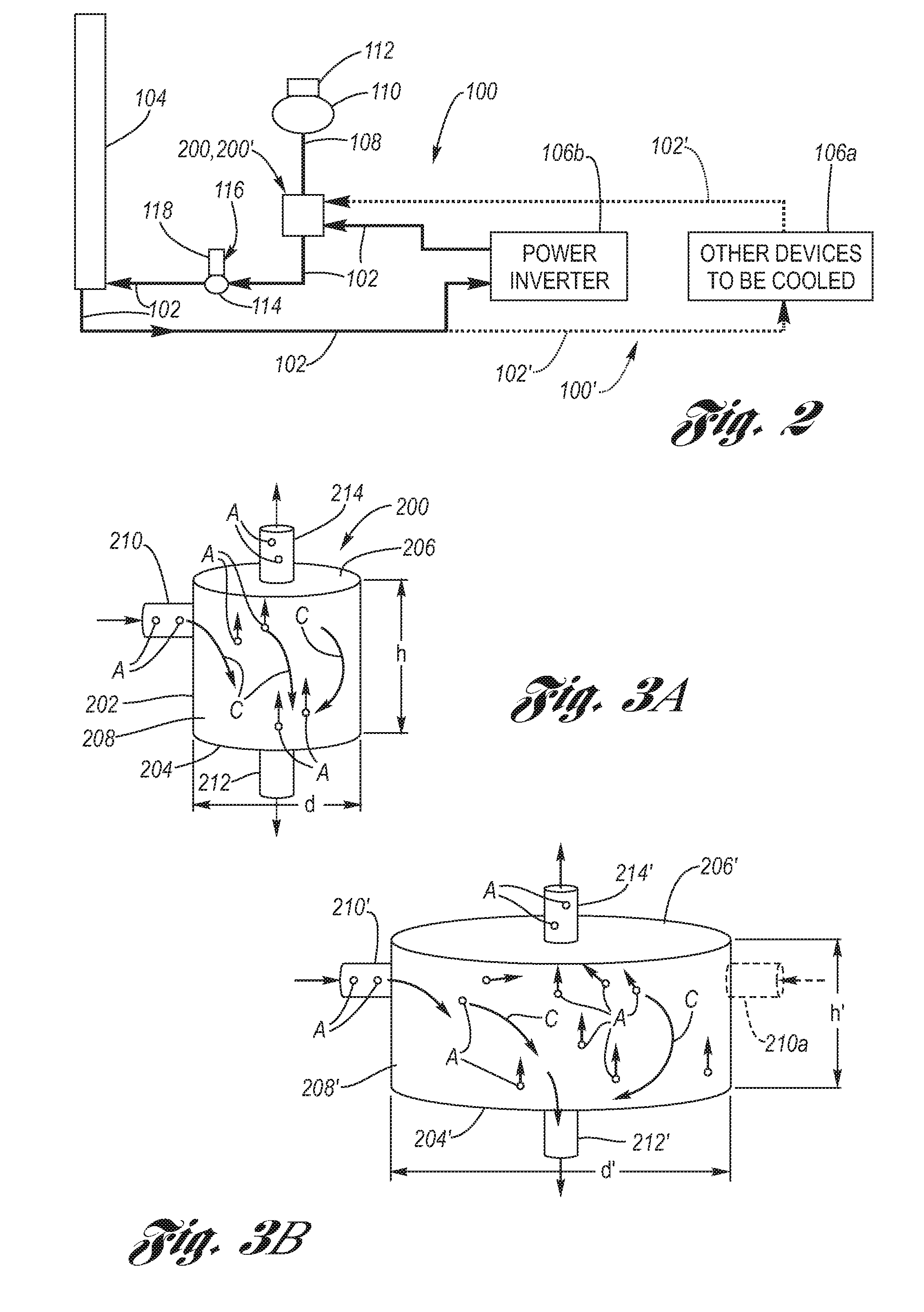Air separator for low flow rate cooling systems
a cooling system and low flow rate technology, applied in the direction of mechanical equipment, machines/engines, transportation and packaging, etc., can solve the problems of high cost, long time to achieve, and large heat generation of electrical components, so as to facilitate the operation of the cooling system and effectively remove air bubbles. , the effect of low flow ra
- Summary
- Abstract
- Description
- Claims
- Application Information
AI Technical Summary
Benefits of technology
Problems solved by technology
Method used
Image
Examples
Embodiment Construction
[0023]Referring now to the Drawing, FIGS. 2 through 4 depict various structural and functional aspects of a low flow rate coolant system, suitable for a motor vehicle, which incorporates an air separator according to the present invention.
[0024]Turning attention firstly to FIG. 2, a low flow rate cooling system 100 includes coolant piping 102, 102′ by which a liquid coolant C (see FIGS. 3A and 3B) flows through a main heat exchanger 104, whereat heat of the coolant is exchanged with the atmosphere, and flows by piping 102 to various electronic devices 106a, which may be connected in series, parallel or series-parallel with respect to each other, or to other electronic devices 106b via piping 102′ of one or more second low flow rate coolant loops 100′. At the electronic devices 106a, 106b heat generated thereby is removed by absorption by the coolant flowing therepast. The coolant flows through an air separator 200, 200′ according to the present invention, which has a coolant reservo...
PUM
 Login to View More
Login to View More Abstract
Description
Claims
Application Information
 Login to View More
Login to View More - R&D
- Intellectual Property
- Life Sciences
- Materials
- Tech Scout
- Unparalleled Data Quality
- Higher Quality Content
- 60% Fewer Hallucinations
Browse by: Latest US Patents, China's latest patents, Technical Efficacy Thesaurus, Application Domain, Technology Topic, Popular Technical Reports.
© 2025 PatSnap. All rights reserved.Legal|Privacy policy|Modern Slavery Act Transparency Statement|Sitemap|About US| Contact US: help@patsnap.com



